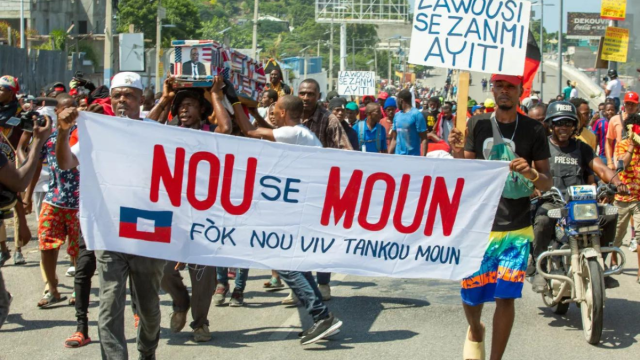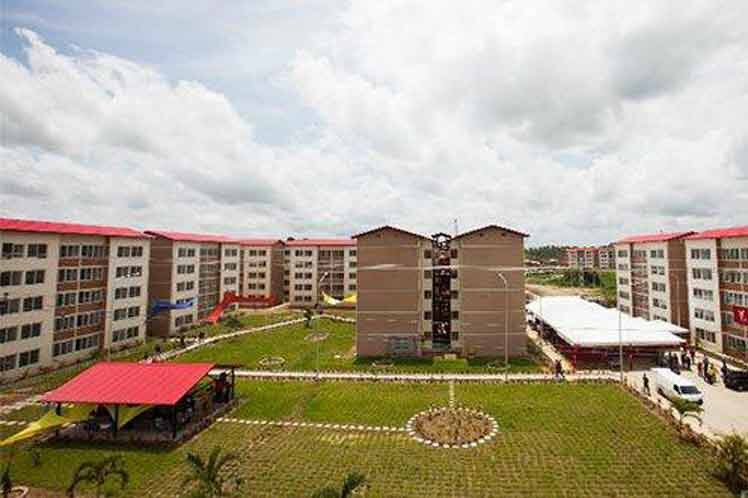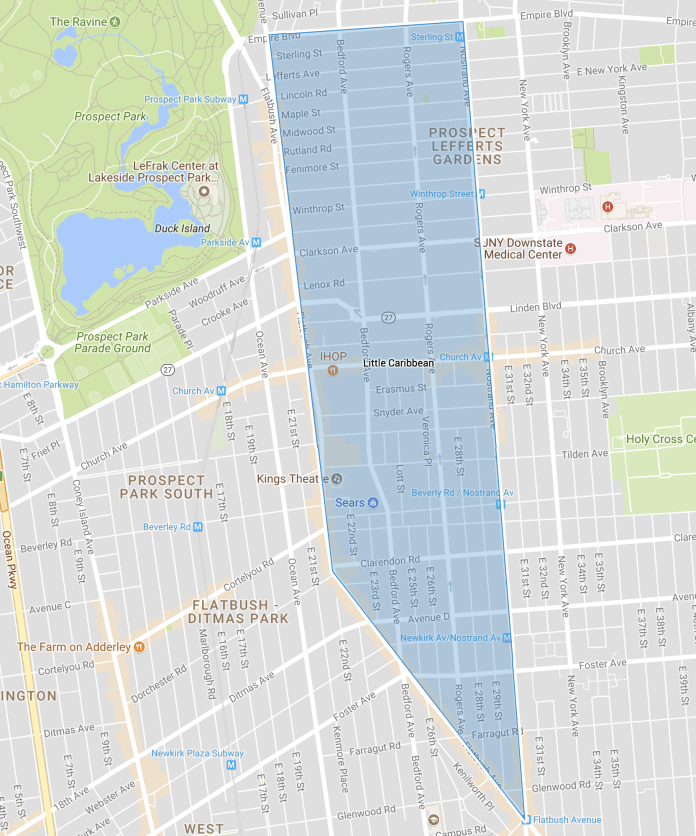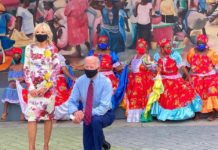A powerful wave of vigilantism has brought both optimism and fear, leaving governments on the sidelines
Port-au-Prince is as violent as it has ever been, but for two weeks now the fear has also flowed in a different direction — thanks to a phenomenon known as “Bwa Kale.”
“Bwa Kale” literally means “peeled wood” in Haitian Creole. It’s also a metaphor for an act of swift justice.
While gang members continue their depredations in the east end of the Haitian capital, in other parts they have been forced to flee. Many have been lynched or summarily executed following capture by groups of citizens, sometimes acting alongside police.
Bwa Kale messages and memes are everywhere on Haitian social media, and recording artists like Tony Mix have put out tracks promoting the trend. There is even a Bwa Kale dance.
While many have reservations about the movement and where it might lead, large numbers of ordinary Haitians seem to have found a kind of joyous release in turning the tables on their tormentors.
Burned alive
A spontaneous event on April 24 appears to have been the catalyst for the movement. Police in the Canape Vert area of Port-au-Prince intercepted 13 or 14 members of a gang travelling on a minibus to join with an allied gang in the Dubussy district.
“This party didn’t have any long guns with them,” said Louis-Henri Mars, director of the Haitian peacebuilding non-profit Lakou Lape. “They only had pistols in their rucksacks, and when they were stopped, the police disarmed them.”
A crowd quickly gathered at the scene.
“The police felt the pressure, or they felt threatened by the crowd, and they released those guys to die basically,” said Mars. “And the crowd stoned them and burned them to death, and this was the start of it.”
Cell videos from the scene show Haitian police holding a group of young men on the ground while civilians pelt them with rocks. Tires are piled over them. Other videos show the men on fire and display their charred remains.

“It dispelled the myth of their invincibility,” said Mars. The next day, he added, “the group that they were going to meet in Dubussy was also attacked by the population with the police.
“They scrambled out of where they were and they were pursued and, one by one, killed. Some of them were lucky to get arrested and brought to the police station.”
Calls for an “Operasyon File Manchet” (Operation Sharpen Machete) began to circulate on social media in Haiti on April 25. Some evangelical churches also spread the message.
“And so this has created a whole movement all over the city and even the country,” said Mars, “a movement of the police in front and the people behind.”
A fever of revenge
Subsequent days saw many districts of Port-au-Prince move to a war footing. When gangs entered a neighbourhood, people banged pots and pans to alert neighbours. Most neighbourhoods had just a few handguns to defend themselves from gangs armed with automatic rifles, but civilians took potshots and threw rocks from rooftops. Some were able to repel gang invasions.
Crowds went on the offensive, using their numbers to overwhelm gang safe houses, drag suspected gang members out of police stations and kill them in the street.
The anger in the videos is palpable. Haitian gangs have raped women and girls on a massive scale. They routinely kidnap children and use torture against kidnap victims. They have ruthlessly extorted even the poorest families.
In some instances, gang members have been made to confess to crimes or gang affiliations on video. Many are burned using tires — often while still alive.
Burning with tires is a practice that goes back to the era of President Jean-Bertrand Aristide. It’s also meant as retaliation in kind against gang members who have taunted police with videos of indignities done to the bodies of slain officers. Many Haitians involved in Bwa Kale have also shared images of a young man who was burned to death with a tire by criminals for refusing to join their gang.
Governments reduced to spectators
“Canada is deeply concerned by the recent population movement and escalation of violence in Haiti stemming from the increase of killings and executions committed by criminal actors,” a spokesperson for Global Affairs told CBC News, adding that Canada’s focus is on “bolstering the capabilities of the Haitian National Police in the immediate term.”
Haiti’s Prime Minister Ariel Henry expressed disapproval of the Bwa Kale movement in his May Day speech.
“The insecurity we live in is appalling,” he said. “But don’t let bad plans make us play sordid games.”
“I ask my compatriots, whatever they may have suffered at the hands of the bandits, to remain calm,” he said, adding that Haitians should help police by giving information about suspicious people in their neighbourhoods.
But under Bwa Kale, cooperating with the police goes well beyond giving out tips. Abundant cell phone footage from Port-au-Prince shows police and civilians engaging together in street battles with gang members.
Cooperation between civilians and police is sometimes so close, it completely cuts out the Haitian government.
One neighbourhood’s battle
Laboule and neighbouring Thomassin are well-to-do outlying suburbs of Port-au-Prince. In the small Laboule 12 enclave, a gang led by Ti Makak (Little Monkey) killed three police officers last September and a few weeks later ambushed and killed the district’s most prominent resident, former presidential candidate Eric Jean Baptiste, together with his bodyguard.
“They started terrorizing the population, killing, shooting, raping, kidnapping, ransoming,” the organizer of Laboule 12’s self-defence group told CBC News. CBC is not identifying him due to the threat of gang retribution. He said he barely survived an ambush when gunfire struck the bulletproof windshield of his car.
The resident, a lawyer, said the community petitioned the government for help for months before taking matters into its own hands.

“It’s as if the government is benefiting from the fact that this country is in limbo,” he said. “They still get paid, they’re buying brand new 2023 Land Cruisers for government officials. They’re running with high security, they are safe, and the rest of the people [are] just abandoned.”
He described how his group reached a deal with a local police inspector — they fixed a broken Canadian-made armoured vehicle for about $32,000 US in exchange for a police commitment to use it to defend their neighbourhood.
‘It’s horrific’
The group also hired private security to guard the approaches to the neighborhood.
A video the group shared showed a civilian checkpoint overlooking a footpath into the Laboule 12. People can be seen fleeing uphill from another neighbourhood, where automatic rifle fire can be heard. A man armed with an AR-15 rifle questions the refugees and makes them raise their shirts to show they are unarmed.
The group also rented pickup trucks to conduct surveillance and prepare ambushes. It all led up to what the resident called a “surge” operation that saw Ti Makak and his brother fatally wounded.
The unnamed resident estimates that at least 50 alleged bandits have been killed in his area since then.
“With that surge the entire population started to say that they had enough,” he said. Ti Makak’s death “emboldened some of them and they started going after (gang members) and tracking them. Soon it was the majority of the people against the gang and they started killing them.
“As a lawyer myself, it pains me to say, but there were, there was a bunch of summary executions … They were stoned to death and burned with tires, some of them even alive. It’s horrific.”
CBC News saw video that showed an accused gang member in Thomassin being stoned and burned in a fire.
“We’ve put back security on some of the territories we lost,” said the resident. “So there’s a sense of relief even though there’s trauma.
“You start to see people coming back, coming out and starting walking again. You have some local shops that are reopening slowly. It’s a slow movement, but there’s a huge relief.”
Innocents caught up
But as with all mob violence, this vigilante movement has claimed some innocent victims.
Police officer Emmanuel Derilien was lynched in St-Louis-Du-Nord on Monday when he was mistaken for a gang member after he shot and wounded two people in an altercation.
Crowds can quickly surround an unfamiliar face and sometimes don’t give strangers a chance to justify their presence.
Though it’s supportive of police, the Bwa Kale movement appears to pose a threat to the unpopular Ariel Henry government and to undermine Haiti’s standing among the nations that back it, including Canada.
Most Haitians see the ruling Pati Ayisyen Tet Kale (Haitian Bald Head Party) as not only ineffective in fighting the gangs but as an accomplice of them — a conclusion supported by human rights groups.
“Whatever Ariel Henry is saying is not going to be listened to by the population because he and his government have not been able to to defend them,” said Mars.
“The police, the street officers at least, have suffered quite a bit at the hands of the gangs who’ve been killing them, and hiding and destroying the bodies of those they kill so that their families would not be able to give them proper burial. So the street officers are also in a lot of ways taking things into their own hands.”
New leaders rising
The wave of vigilantism in Haiti is bringing new leaders to the fore, such as Jean-Ernest Muscadin, the “komise” of Miragoane (a role somewhat like a district attorney).
A lanky man of serious demeanour who wears body armour to work and carries a rifle, Muscadin has become a star of Haiti’s raucous citizen media channels for making his district an island of relative safety in a sea of chaos.
“I am a missionary. I came to restore order,” Muscadin told Haitian reporters recently, adding the state gives him nothing beyond his salary of $445 a month.
Everything else “comes from the diaspora,” he said. “You can’t talk about the state. The state cannot help itself.”
Haitian-Canadians based in Montreal formed a group called the Alexandre Petion Collective which has provided Muscadin with drones, fuel for vehicles and other assistance.
“We are marching with him 100 per cent. He is our inspiration for our collective and the whole Bwa Kale movement in Haiti,” a member of the collective told CBC News. (CBC is not identifying this person either, due to the risk of gang retribution; they travel to and from Haiti regularly.)
Muscadin reportedly maintains rigorous control over people and goods moving through his area. Gang members captured in Miragoane can expect to be “shot while trying to escape.”
“All revolutions have the potential of birthing that kind of leadership” said Mars. “And sometimes this is dangerous also because you don’t know who, when and where and what kind of individual is going to show up on the stage. It’s the start of something that could evolve into a very dangerous situation.”
Unintended consequences
Self-defence groups formed to combat rampant criminality in Colombia in the 1990s morphed into violent paramilitary groups that stole land, displaced people and trafficked drugs. Mars warns something similar could happen in Haiti.
“In fighting the gangs, you are letting go of the restrictions of propriety, of due process, of state control of violence, and this movement can be the breeding ground for more gangs,” he said. “In general, when you have vigilante groups, what happens is that some of them over the over weeks and months become gangs themselves.WATCH | Vigilante movement has swept Haiti:
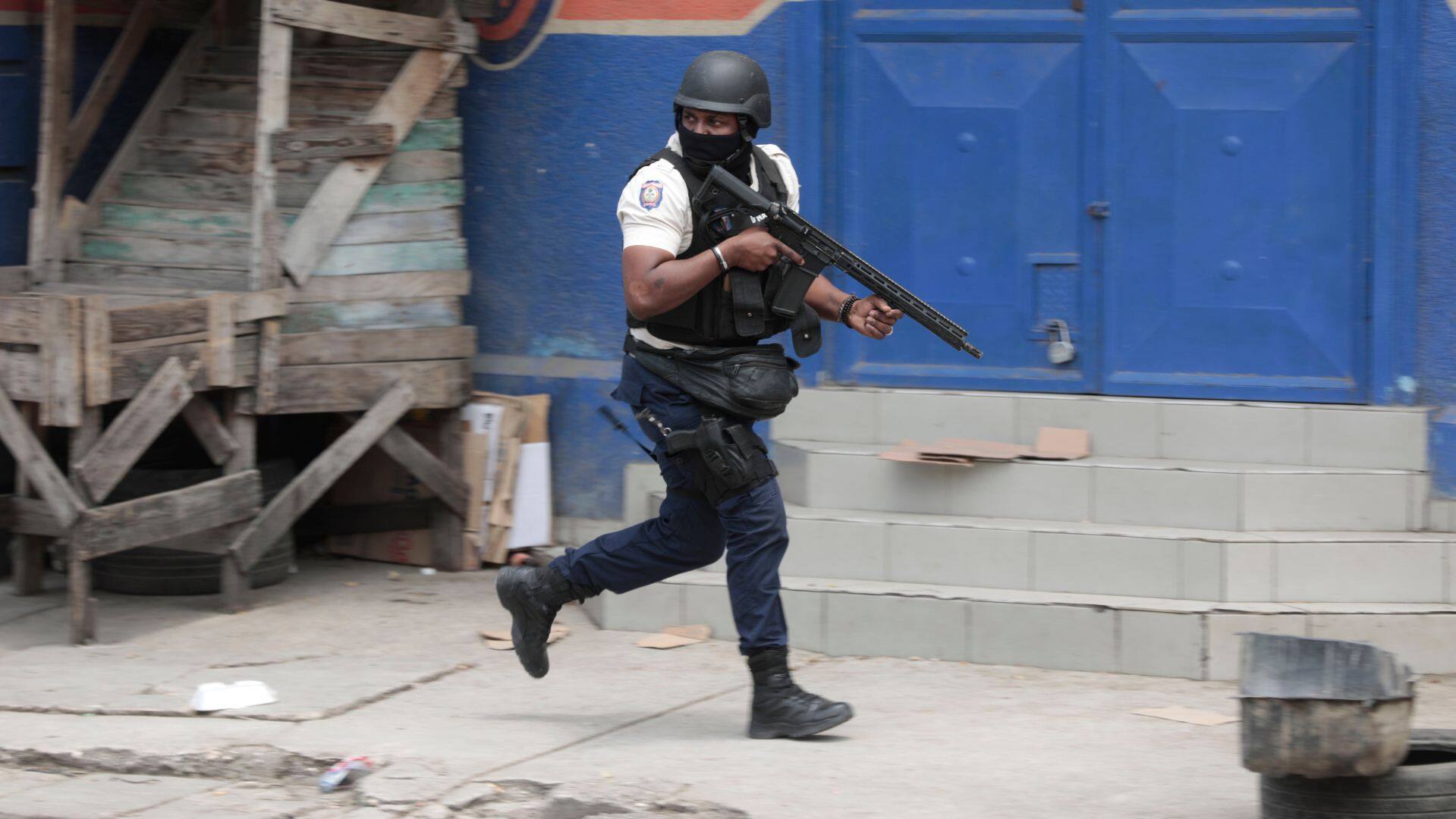
Vigilantes fight back against Haiti’s gangs
18 hours agoDuration2:19Warning: Video contains graphic images | A rise in armed vigilante groups has opened an unpredictable new chapter in Haiti’s gang war, as ordinary civilians, tired of being terrorized, take matters into their own hands.
“Since the social situation has not changed, the space is there for the replacement of the present generation by another generation of gangs.”
On balance, though, Mars said he shares the sense of optimism that Bwa Kale has brought to the Haitian capital for the first time in years.
“There is something that has changed. There’s a window of opportunity that has opened. Now it is up to us Haitians to take this window of opportunity and move in the right direction and not continue to destroy, burn and kill.”







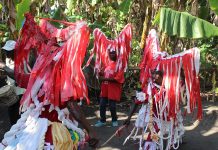




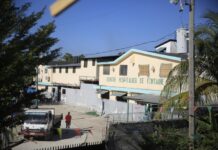











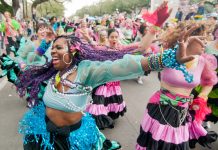



![Phyllisia Ross – KONSA [Official Music Video]](https://haitiville.com/wp-content/uploads/2014/08/phyliisia.jpg)
